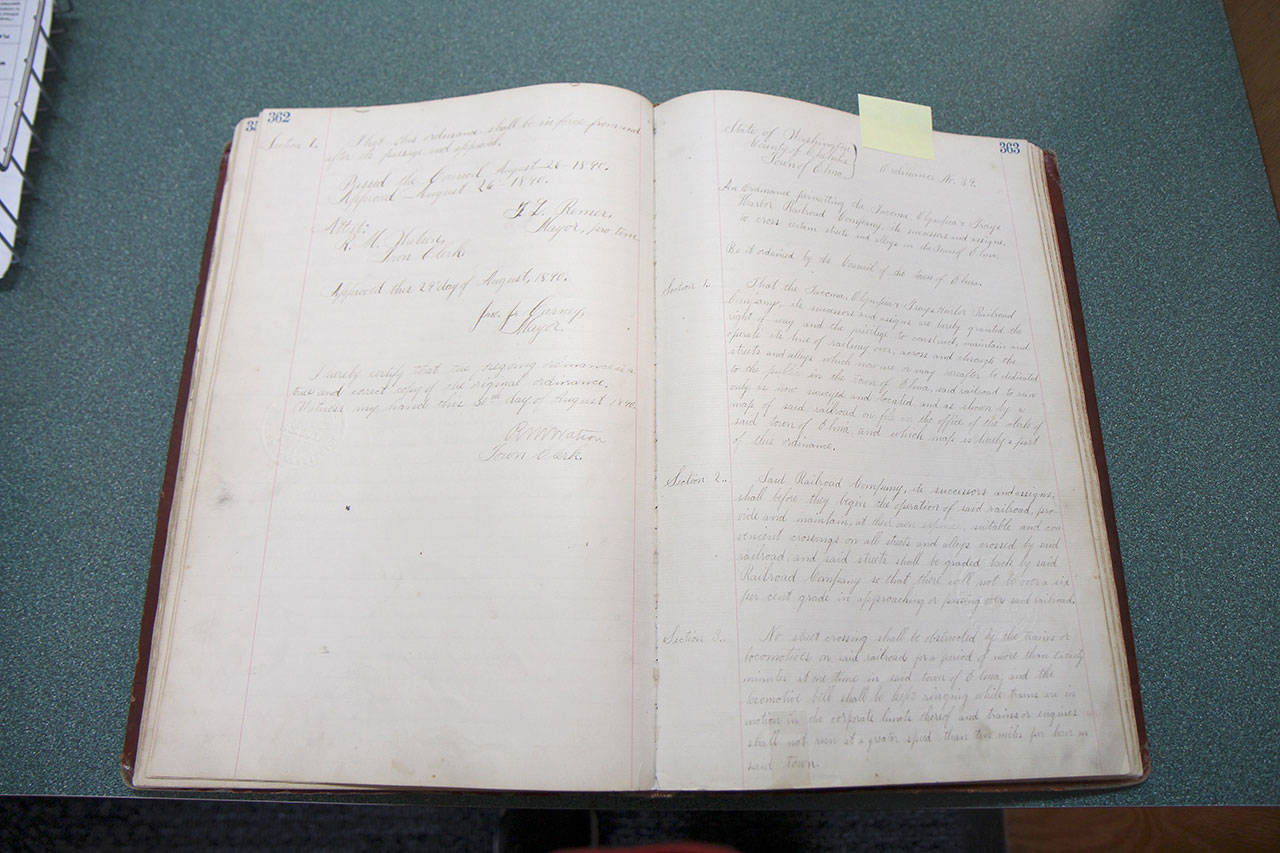If you spend much time in East County, you’ll hear a train whistle blow as cars roll through town on the way to or from the Port of Grays Harbor. But it’s times when the trains aren’t rolling that can be a problem.
The city of Elma is hoping to do something about trains that bifurcate the town, which could mean the ambulance with a patient is on one side and the hospital is on the other. Elma Mayor Jim Sorensen says he’s heard of trains blocking roads in Elma for up to 90 minutes.
Elma officials are about to put up a webcam to monitor the trains and are ready to fine the railroad company for each blocking lasting longer than 20 minutes.
“I know how important the railroad is to the economy of Grays Harbor County. And I do appreciate the railroad for its contributions to our economy,” Sorensen said. “But we have to be very cognizant of the public safety of the citizens who live on the other side of the tracks. And it’s not just city citizens. There are people outside the city on the other side of the tracks as well.”
Puget Sound & Pacific Railroad (PSPR) owns or leases 158 miles of tracks that start from Aberdeen, run through Elma and head southeast to Chehalis or northeast to Bremerton and Bangor.
PSPR is a part of Genesee & Wyoming (G&W) Inc., which owns or leases 122 freight railroads in North America, Europe and Australia. According to its 2017 annual report, the net income, attributable to G&W, was $549 million on operating revenues of $2.2 billion. G&W also employs about 8,000.
Elma is a city of about 3,000, and it’s total budget for 2019 is a little more than $8.8 million
“We’re David and the railroad is Goliath,” Sorensen said at the March 18 City Council meeting. Sorensen says the city controls the right-of-way on the tracks, and he is bracing for a fight.
The situation is nothing new to Harborites or officials at G&W.
“This issue has existed for at least two decades, during which (PSPR) has helped the businesses that it serves increase their traffic with the railroad more than 20-fold — which is obviously good for the region’s economy and for the environment,” a G&W spokesperson wrote in an email.
“Railroad management has met with Mayor Sorensen to discuss his concerns, as they have with all preceding mayors,” the spokesperson wrote. PSPR “has provided the Elma fire department with its radio frequencies, allowing emergency responders to communicate directly with train crews in the event that a crossing needs to be cleared quickly.”
The situation is older than G&W thinks.
In 1890, the problem was frequent enough that officials in the 17-month-old town created Ordinance No. 39, which states, “No street crossing shall be obstructed by the trains or locomotives on said railroad for a period of more than twenty minutes at one time in said town of Elma … .”
A.H. Kennedy, mayor pro tem in October 1890, signed the ordinance. At the time, the railroad referenced was “the Tacoma, Olympia & Grays Harbor Railroad Company, its successors and assigns,” according to the ordinance.
The ordinance deemed each offense a misdemeanor “subject to a fine of not more than fifty dollars and costs for each offense.”
It seems no mayor since Kennedy has had an adequate solution to the problem of trains stopping in Elma.
“We need to do something for public safety,” Sorensen said. He calculates that $50 fine is equal to about $3,100 today.
“I don’t know why they’re stopping in our town. I’m told they’re just hooking up the trains. I have witnessed it stopped and not moving for over 40 minutes.”
During last week’s meeting, the City Council authorized paying for a traffic-camera of sorts to keep track of how long trains spend on the tracks as well as to broadcast a live feed on the internet. Currently on the city’s website is a link to report trains blocking tracks with the state Utilities and Transportation Commission.
At the April 1 council meeting, Sorensen hopes to introduce a modernized ordinance.
“I expect it to pass, maybe not in its original version,” he said. “Is it per incident or maybe every 20 minutes that they’re going to be fined $3,000? If they’re blocking for an hour will it be a $9,000 fine?”
Those and other details could be decided at the next Elma council meeting, which is 6 p.m. Monday at City Hall.
In the meantime, PSPR says that the volume at the Elma train yard means blockages will continue.
“I can assure you that the railroad is very cognizant of the issue and does everything in its power to minimize the time that crossings are occupied,” the G&W spokesperson’s statement says. PSPR “is a local business as well, and its employees and their families live in the same communities that the railroad serves.”
Sorensen hopes the community will rally around his cause.
“I hope that the county will get behind us on this. I hope that the port will get behind us on this,” he said. “And I really hope that the customers of the railroad will get behind us on this and put pressure on the railroad to stop this.”



